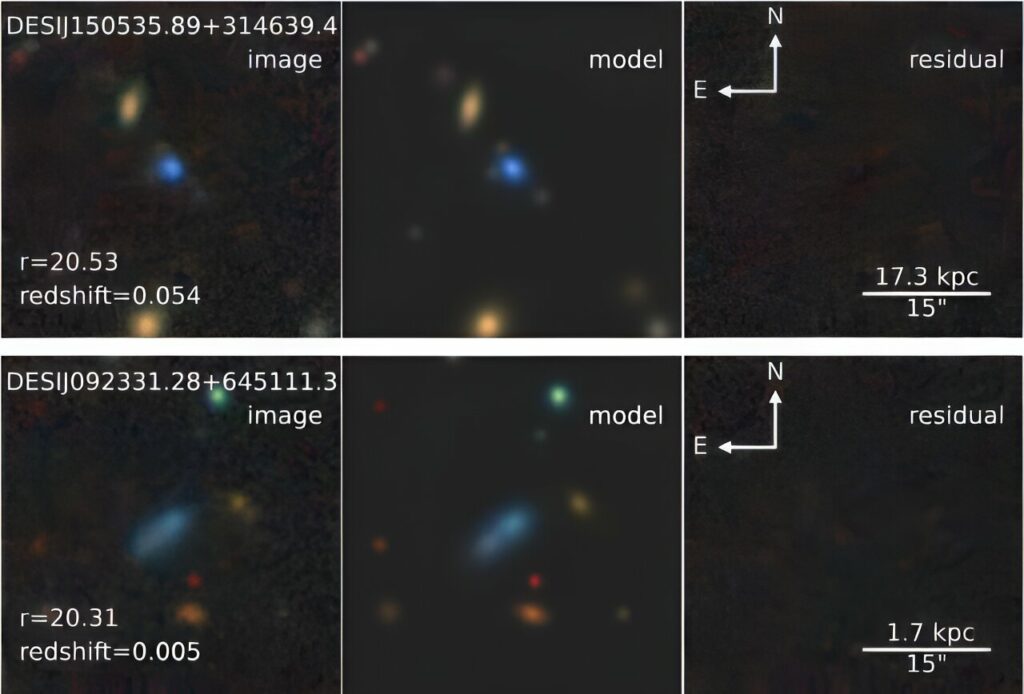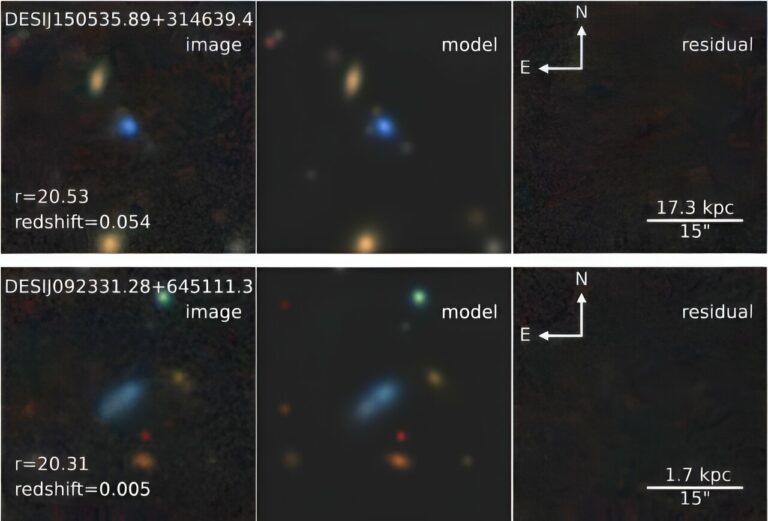Astronomers have identified nearly 100 newly discovered galaxies with extremely low metal content.

Examining early data from the Dark Energy Spectroscopic Instrument (DESI), an international team of astronomers has pinpointed 95 novel galaxies with exceptionally low metal content at a low redshift. Published on the pre-print server arXiv on December 1, the findings shed light on extremely metal-poor galaxies (XMPGs), characterized by metallicity below 0.1 of solar metallicity. Due to their primitive chemical state, XMPGs offer valuable insights into galactic chemical evolution theories and the physical processes during their initial developmental phases.
While XMPGs are believed to be common at high redshifts, their observation proves challenging due to their low masses. Hence, astronomers are keen on examining local XMPGs at low redshifts as potential analogs for early high-redshift galaxies in terms of mass and metallicity.
Led by Hu Zou from the University of Chinese Academy of Sciences in Beijing, the team leveraged early DESI data to amass a substantial sample of XMPGs. Their analysis focused on DESI early data, including the Early Data Release (EDR), aiming to detect XMPGs and explore their mass-metallicity relationship.
Initially selecting 1,623 star-forming galaxies with significant oxygen emission lines, the team identified 223 extremely metal-poor galaxies at redshifts below 1.0. Ultimately, 95 were confirmed as genuine XMPGs, while 128 remained XMPG candidates.
Most of the reported XMPGs were situated at a low redshift below 0.3, predominantly dwarf galaxies with stellar masses not exceeding 1 billion solar masses. The most metal-poor galaxy in the sample, designated DESIJ150535.89+314639.4, exhibited an oxygen abundance at just 1/34 of the sun’s, a stellar mass of approximately 15 million solar masses, and a star-forming rate of 0.22 solar masses per year.
Preliminary imaging examinations of the two most metal-poor galaxies unveiled distinct morphologies, hinting at diverse evolution and physical origins. However, further investigations are necessary to validate this hypothesis.
In conclusion, the astronomers emphasized that the identified extremely metal-poor galaxies might serve as low-redshift analogs for galaxies at higher redshifts, potentially up to 6.0 or beyond, offering a valuable window into the universe’s early evolutionary stages.
This article is republished from PhysORG under a Creative Commons license. Read the original article.
Do not forget to share your opinion with us to provide you with the best posts !




0 Comments